Convolvulus equitans, Texas Bindweed
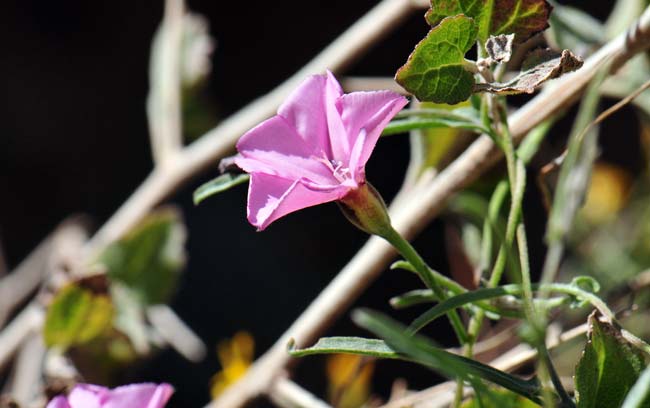
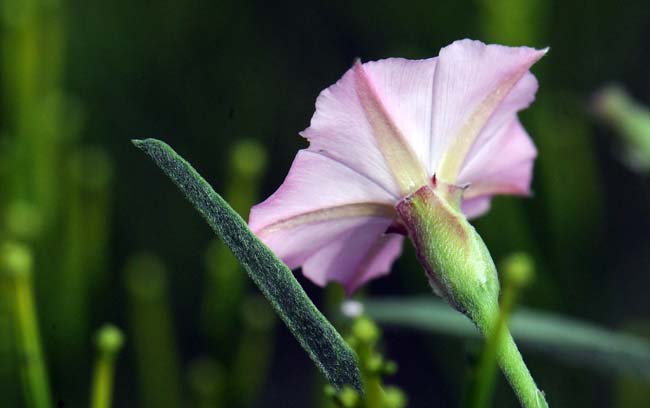
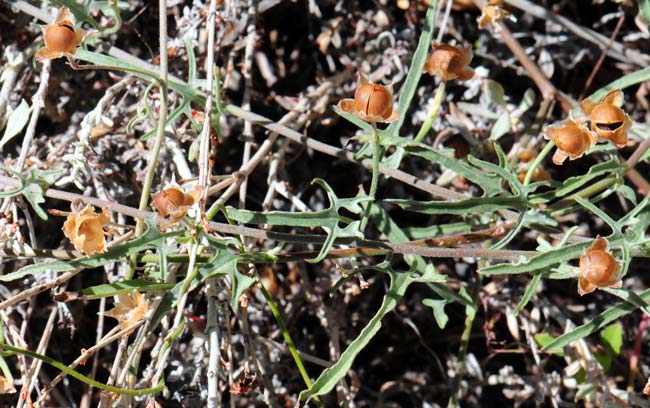
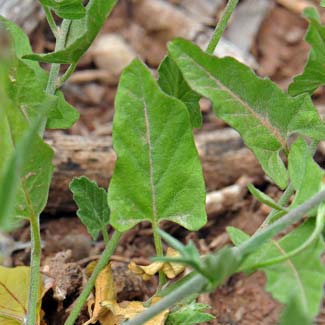
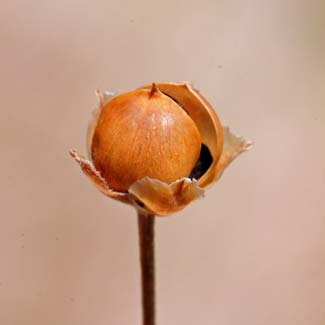
Scientific Name: Convolvulus equitans
Common Name: Texas Bindweed
Also Called: Gray Bindweed, Hoary Bindweed
Family: Convolvulaceae, Morning Glory Family
Synonyms: (Convolvulus hermannioides, Convolvulus incanus, Convolvulus simulans)
Status: Native
Duration: Annual or perennial.
Size: 1 foot or more, trailing to 2 or more feet.
Growth Form: Forb/herb, vine; grayish-green, trailing, decumbent or prostrate, pubescence, does not form long aggressive mats.
Leaves: Green; variable, 1 to 3 inches long, alternate, triangular or arrow-shaped, narrowly linear, leaves with backward-pointed basal lobes (hastate), leaves with short sharp hairs and short petioles.
Flower Color: Pinkish, bluish or pinkish-purple; flower small about 1 inch, corolla bell shaped tipped with 5 sharp points, corolla with 10 sharp folds, solitary flowers, calyx with overlapping sepals, fruit is a capsule with 1 or more seeds.
Flowering Season: April or May to October.
Elevation: 3,000 to 6,000 feet.
Habitat Preferences: Upper desert areas in chaparral and pinyon-juniper communities; sandy or rocky well drained soils; roadsides, dry rocky slopes, mesas and disturbed areas.
Recorded Range: In the United States Texas Bindweed is found in the western and southern states and in Arkansas and Alabama; AR, AZ, CA, CO, KS, NM, OK, TX and UT. It also occurs in Baja California and in north and south Mexico. In Arizona, Texas Bindweed is found throughout most of the state with few records in the southwest corner.
North America & US County Distribution Map for Convolvulus equitans.
U.S. Weed Information: No information available.
Invasive/Noxious Weed Information: No information available.
Wetland Indicator: In North America Convolvulus equitans is included on the USDA 2012 National Wetland Plant List as a: Facultative Upland, (FACU) usually occur in non-wetlands, but may occur in wetlands species.
Threatened/Endangered Information: No information available.
Comments: Texas Bindweed is a native attractive small-flowered morning-glory. Unlike other morning-glories of the genus Convolvulus is non-aggressive not out-competing other native species.
Flowers are pollinated by insects who also feed on the leaves. In Texas, White-tailed deer eat the plant and Bobwhite quail feed on the seeds.
In Southwest Desert Flora; also see Field Bindweed, Convolvulus arvensis.

